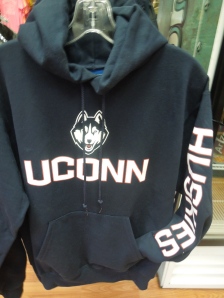UConn Law received several new professors this fall along with the entering 1L class. Five new professors have joined the staff, both in clinical and lecturing capacities According to Assistant Dean of Students, Karen DeMeola.
Whether in the field of human rights or intellectual property and technology issues, Professor Molly Land has been an advocate for her entire career. A graduate of Yale Law School, Land lectured at Yale Law and was a Fellow in the Allard K. Lowenstein International Human Rights Clinic there before teaching at New York Law School. Her research and practice interests are international intellectual property rights matters and human rights enforcement, often including the intersections of those areas. She believes every lawyer, either locally or globally, should give back to his or her community, which can take the form of pro bono work or simply excellent service to clients. Currently, Land teaches Civil Procedure.
Associate Professor Doug Spencer joins the Law School in a joint appointment with the University’s Department of Public Policy, based at the West Hartford campus. He is a graduate of the University of California, Berkeley School of Law, and has worked at the U.S. Department of the Interior and the World Bank. In 2004 and 2005, Spencer served as an election monitor in Thailand. He says that opportunity reminded him that the implementation of democracy both abroad and at home can be a more chaotic endeavor than many realize. Spencer’s research focus has been election and voting rights. His first class at UConn Law will be Constitutional Law next semester, and he will also offer a semester of Election Law.
The Director of UConn Law’s Intellectual Property and Entrepreneurship Clinic in East Hartford, Professor Joseph DeGirolamo, joins the law school after over three decades in private practice, both as a partner in a New York City firm and as a solo practitioner. DeGirolamo earned his law degree at Brooklyn Law School, and is a U.S. Patent and Trademark Office- registered attorney. According to UConn Law’s website, his work has focused on complex patent litigation, involving medical and pharmaceutical products, as well as “trade secret appropriation, antitrust, false advertising and unfair competition claims.” Currently, he offers a clinic in Intellectual Property.
John Cogan, Associate Professor of Law and Roger S. Baldwin Scholar, earned his J.D. at the University of Texas School of Law. Cogan practiced in the areas of health and insurance law for about 20 years in many capacities, including as assistant regional counsel for the U.S. Department of Health and Human Services, as executive counsel for the Rhode Island Office of the Health Insurance Commissioner, and as an associate in private firms in Providence and Boston, according to his staff biography. Before coming to UConn Law, he taught at Roger Williams School of Law, Penn State University, Penn State’s Dickinson School of Law, and Duquesne University School of Law. Cogan is a co-author of the Medicare, Medicaid, and Insolvency Handbook, a treatise on Medicare and Medicaid bankruptcy issues. Cogan teaches Health Law and Health Care Insurance and Finance.
An expert on pension and health insurance, Associate Professor Brendan Maher joins the Law School this fall as a Robert D. Paul Scholar. Maher earned his J.D. from Harvard Law School, according to his staff biography. Before beginning his teaching career, he co-founded the law firm of Stris & Maher LLP, where he “represented ERISA [Employee Retirement Income Security Act] beneficiaries before the United States Supreme Court on multiple occasions.” He was twice voted Professor of the Year by students at Oklahoma City University School of Law, where he taught prior to starting at UConn Law. Maher will teach Employee Benefits, Business Associations, and Evidence.








